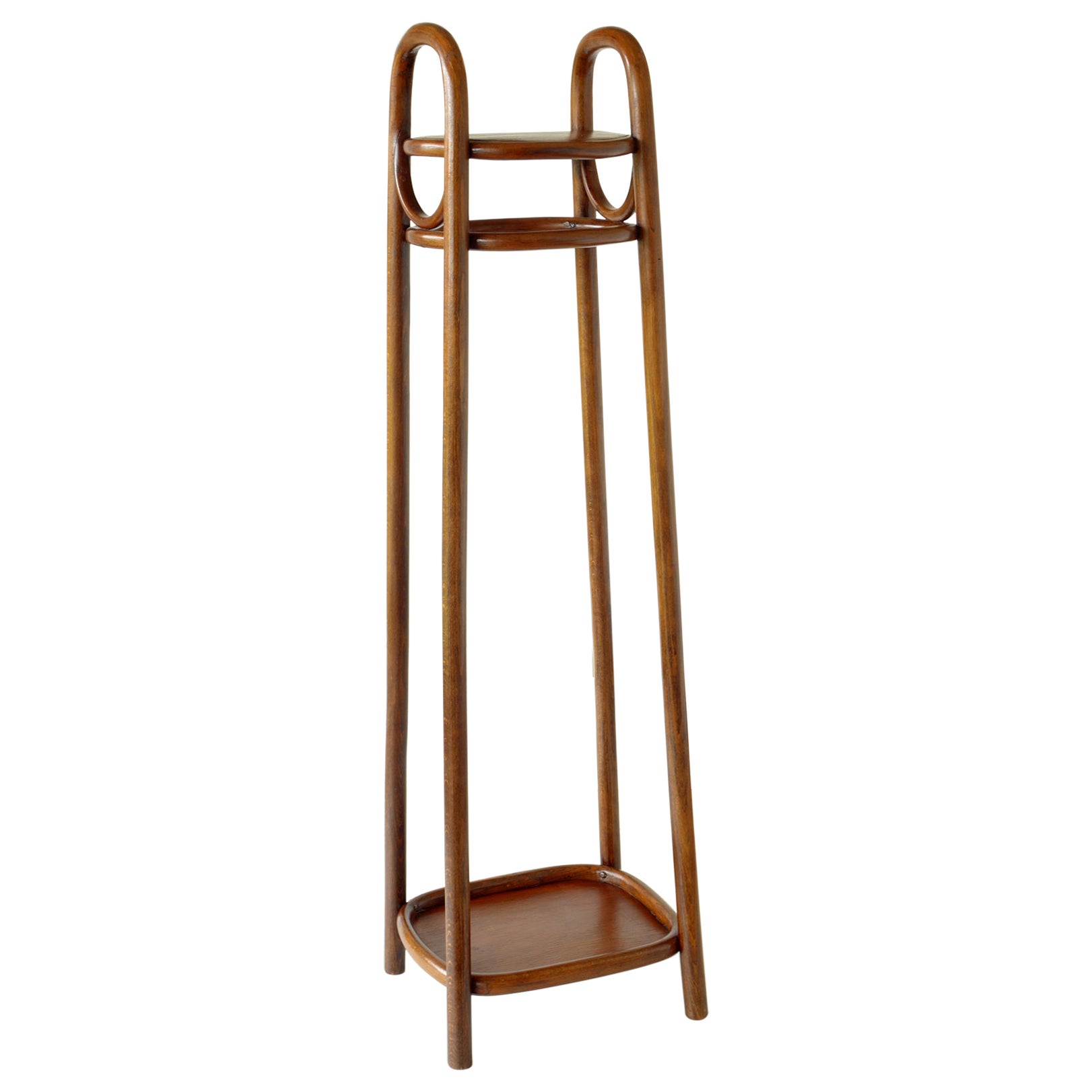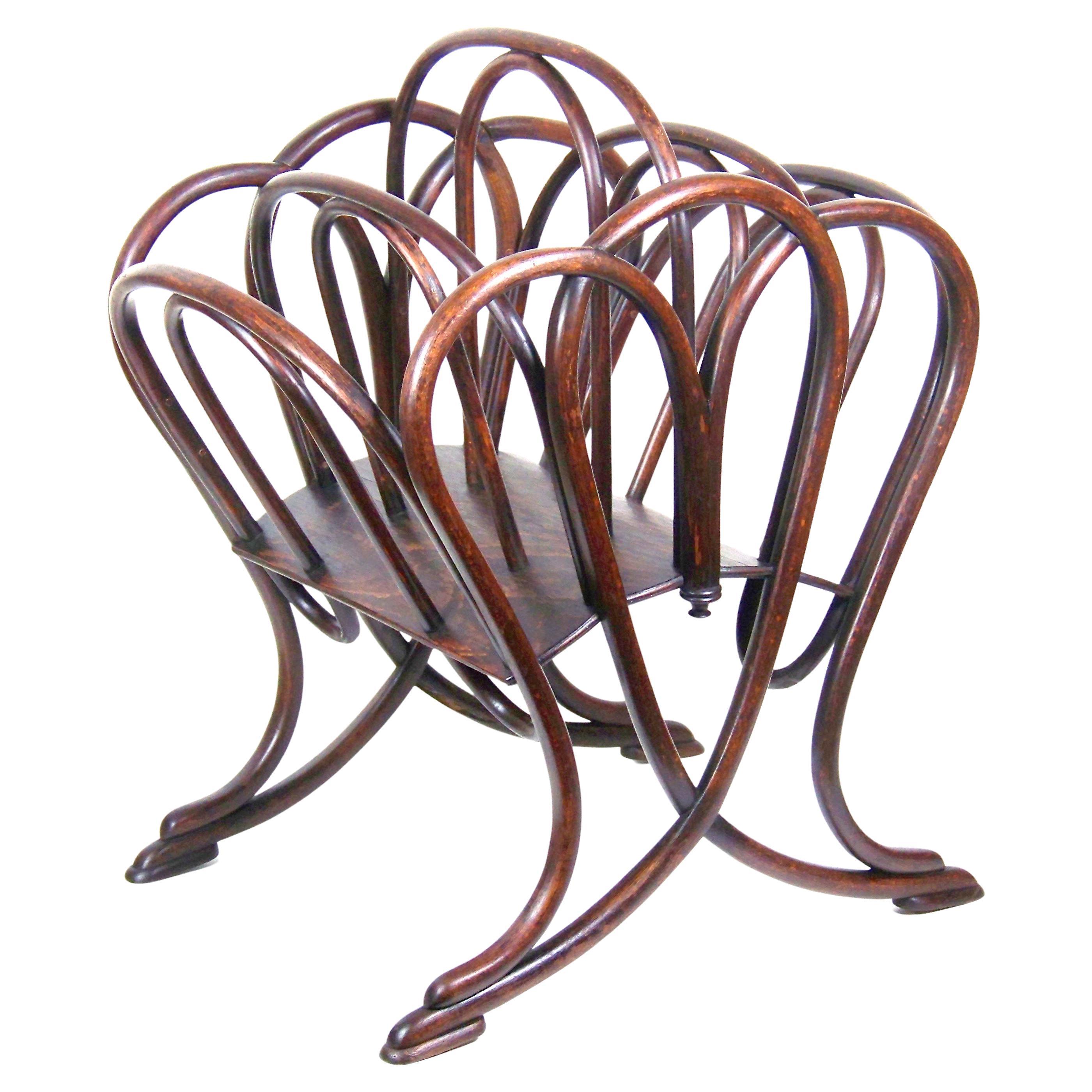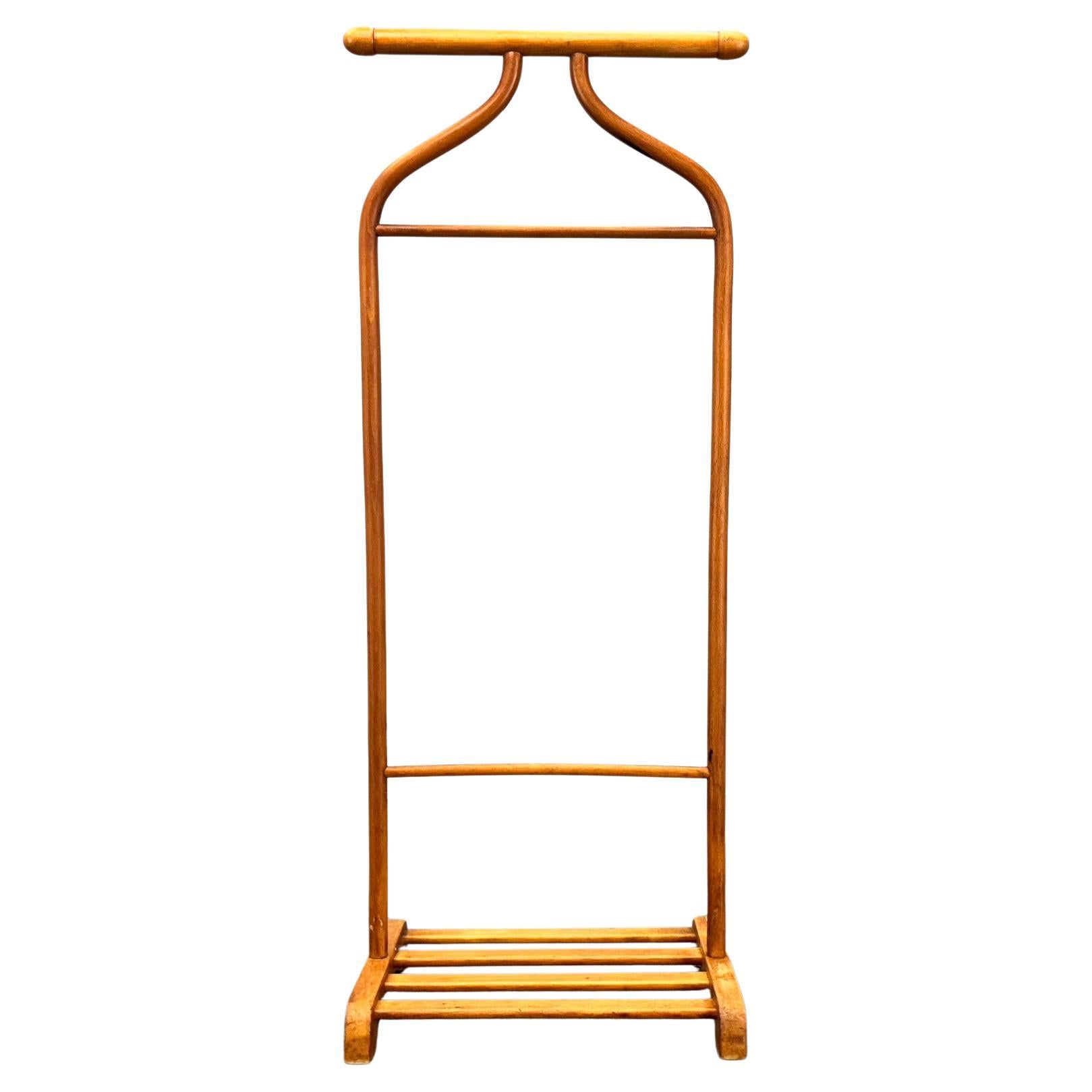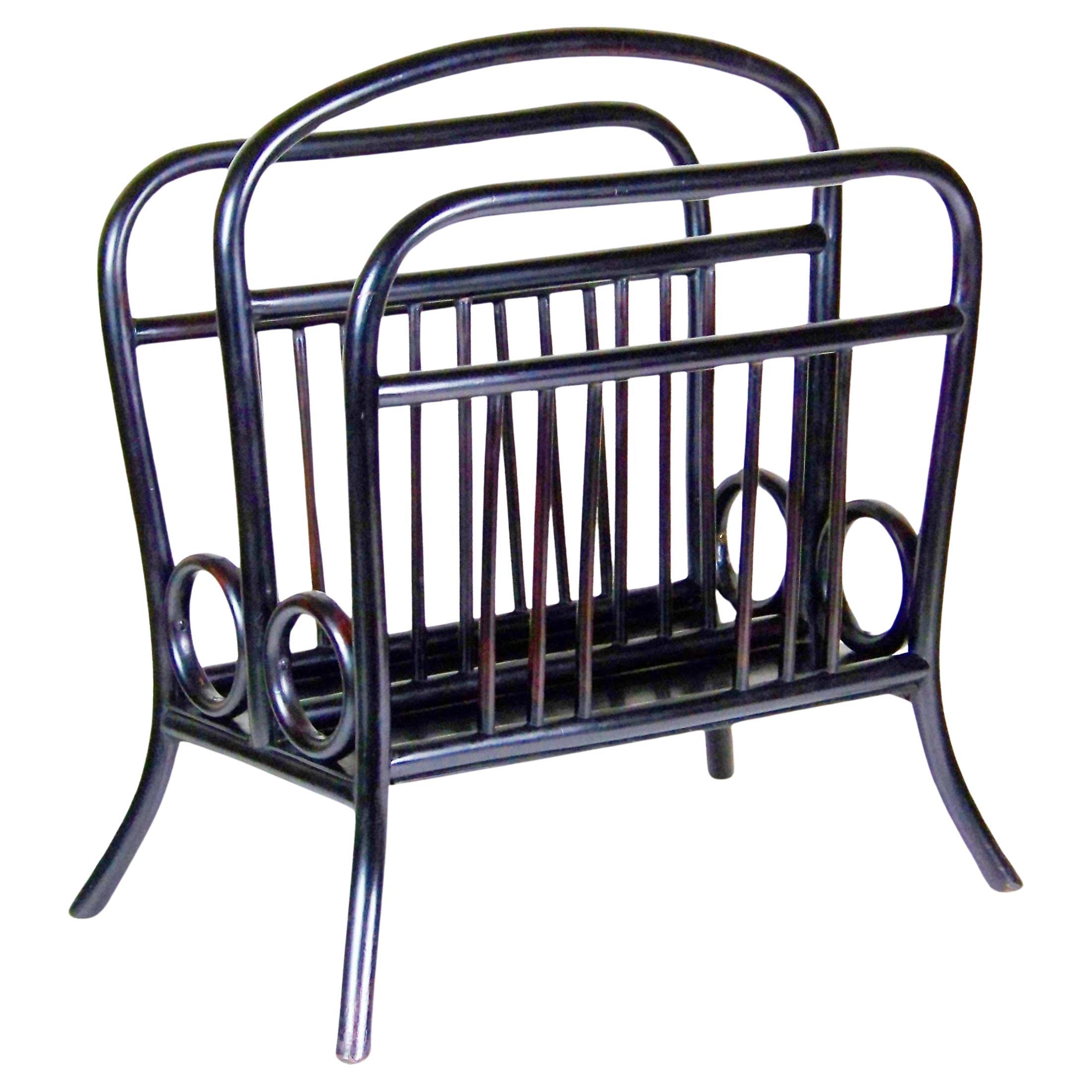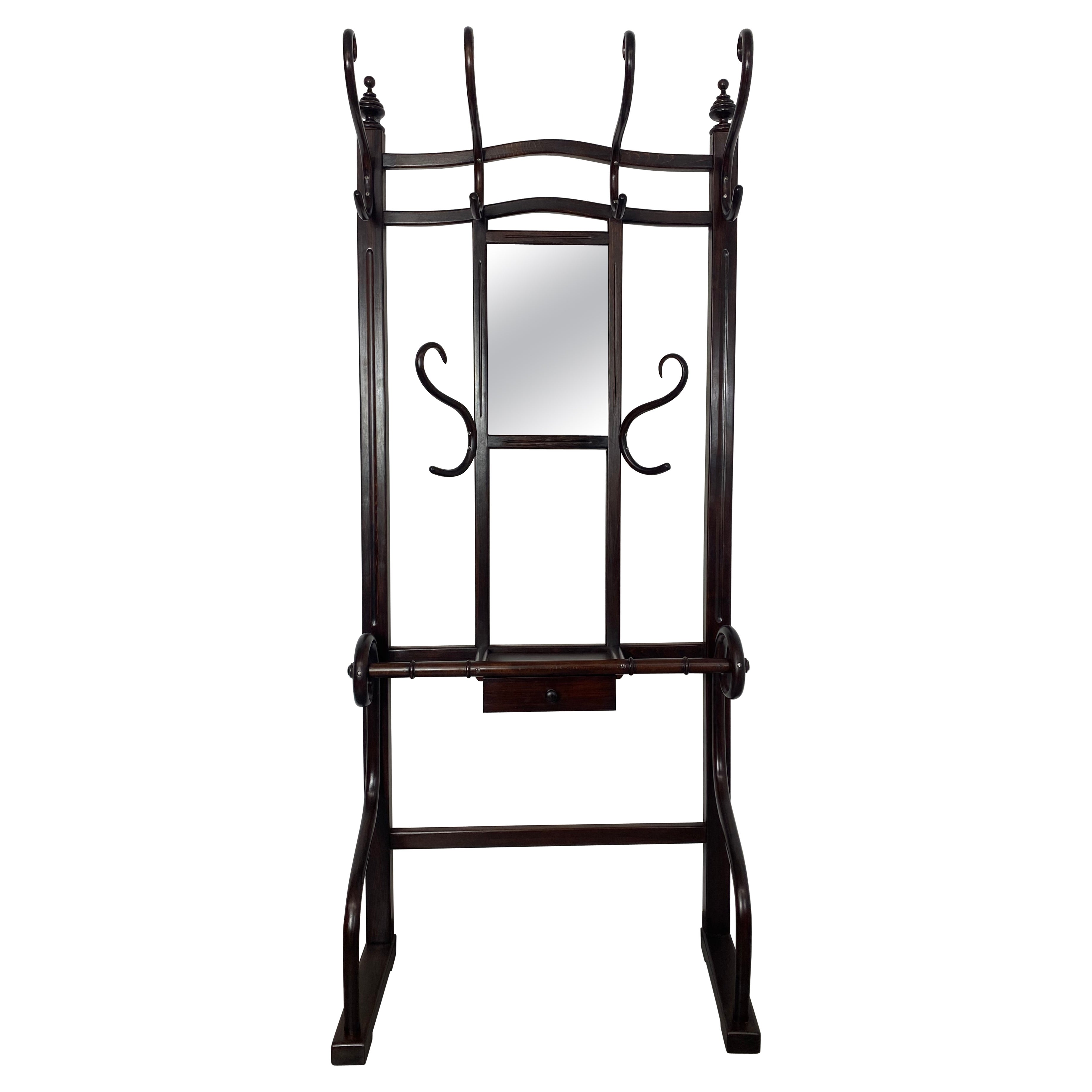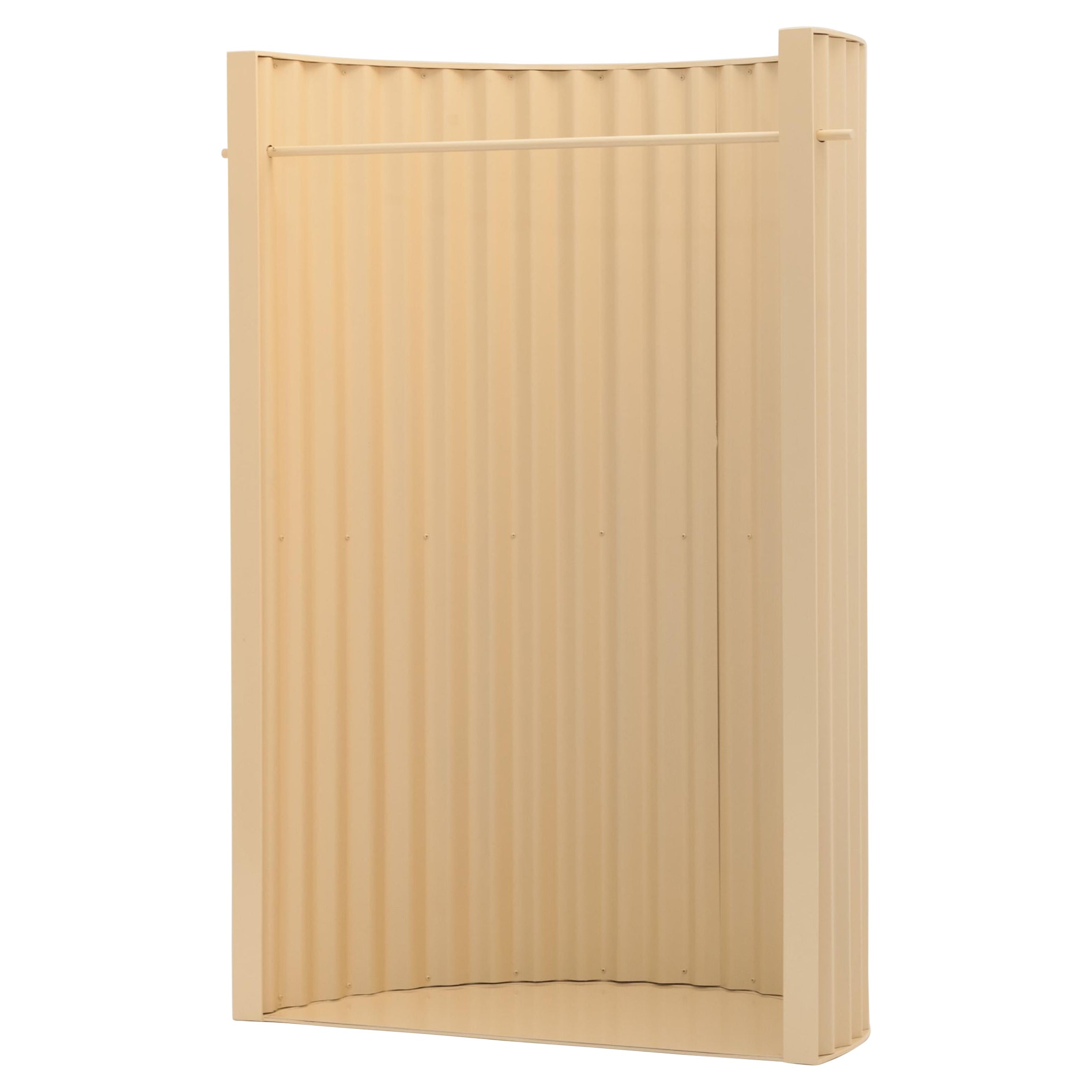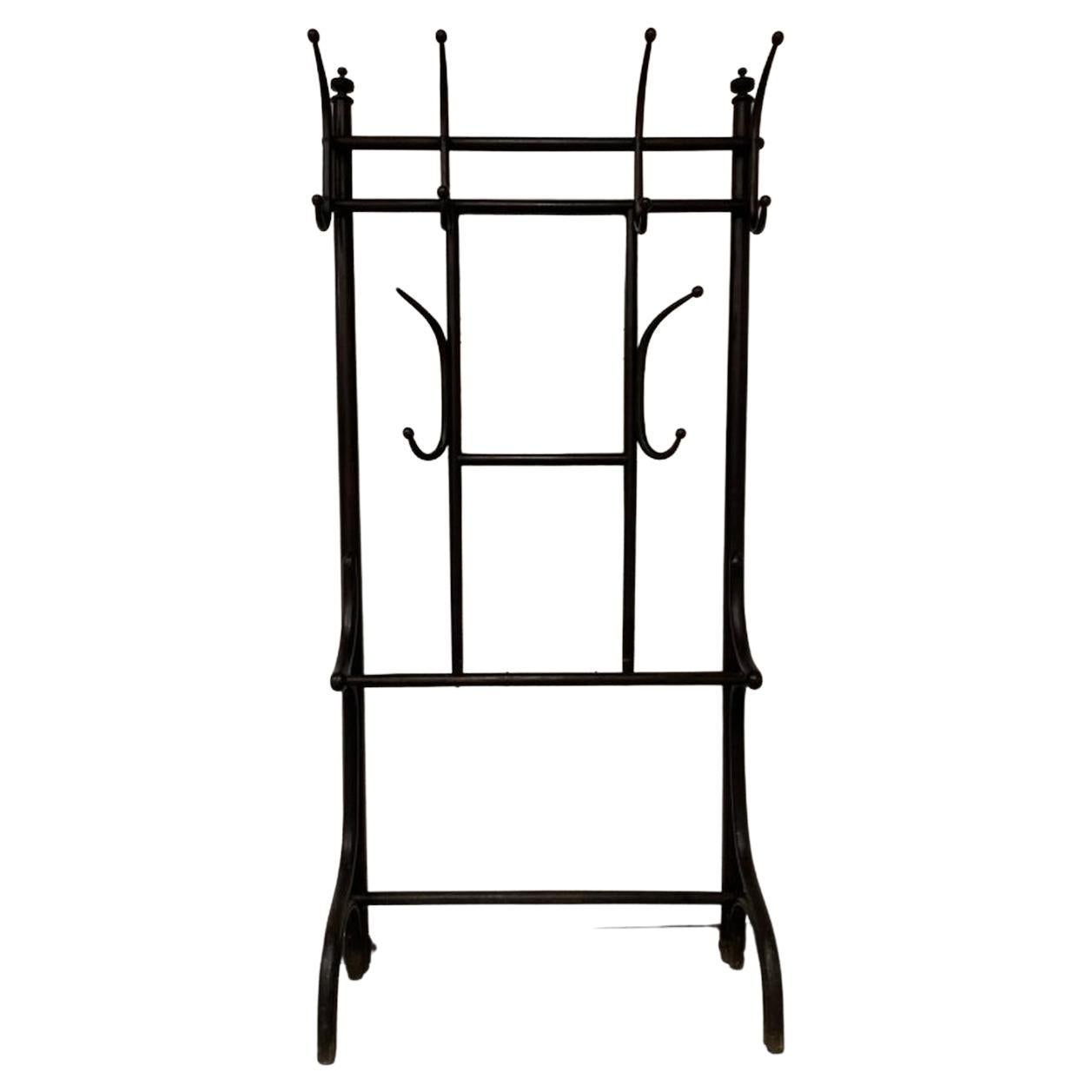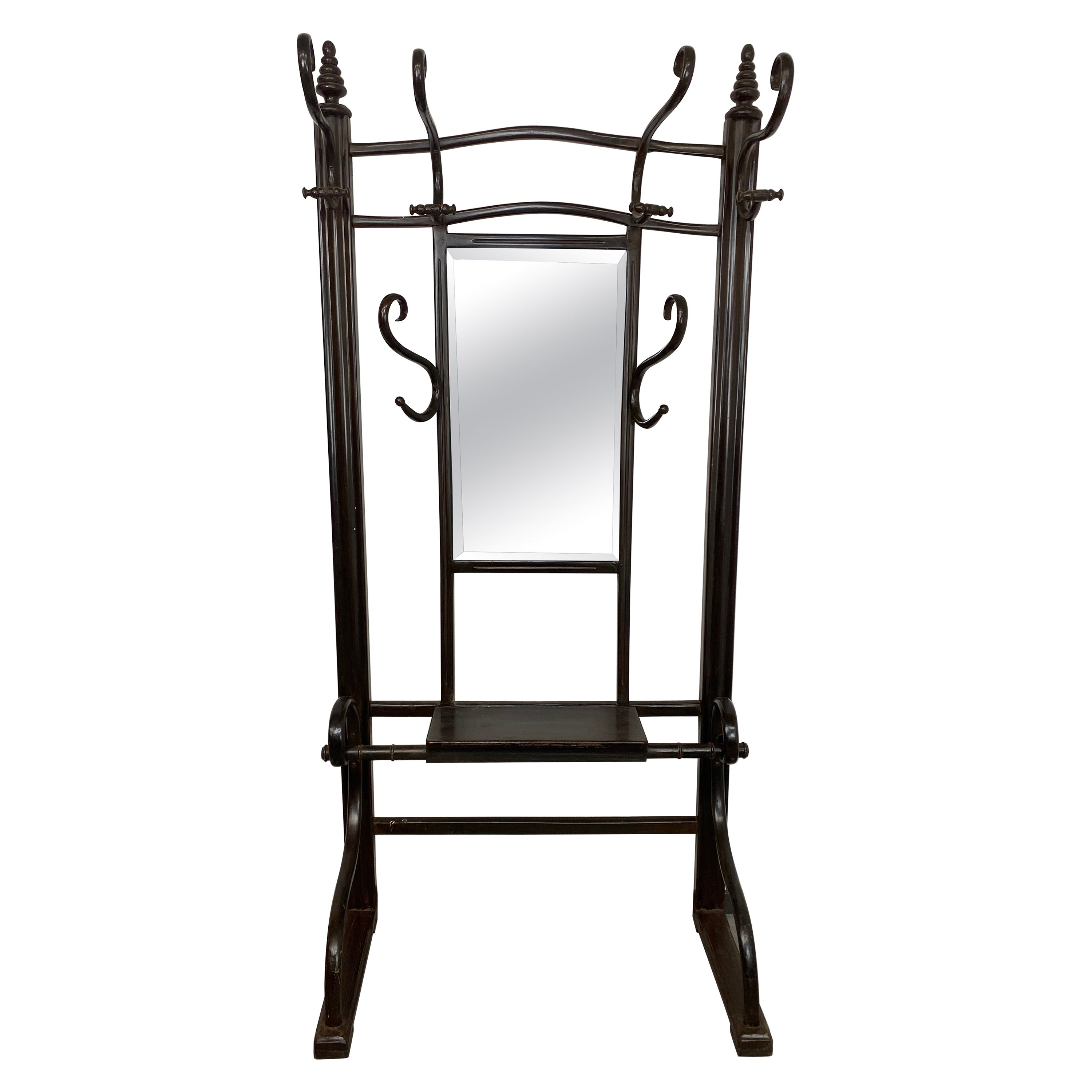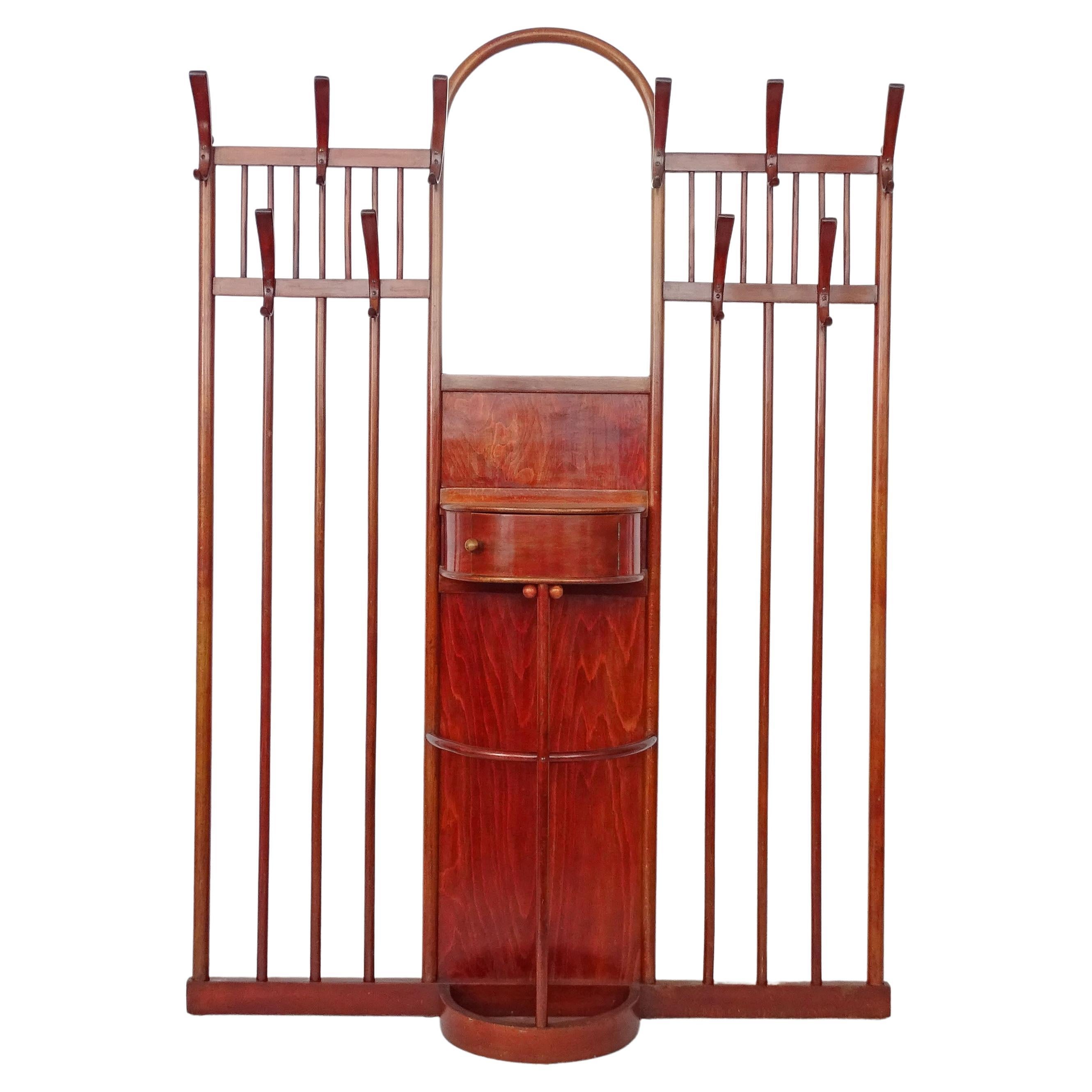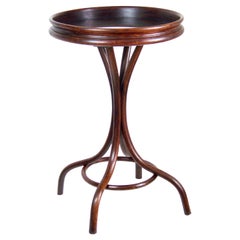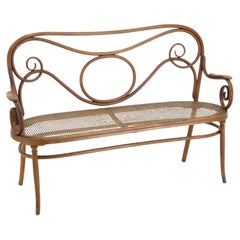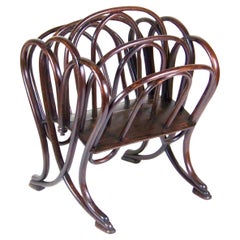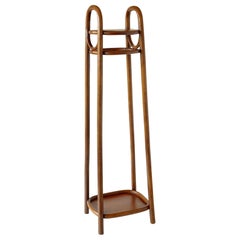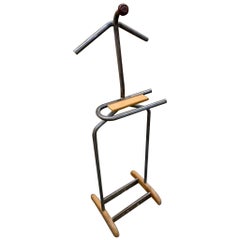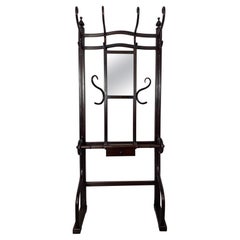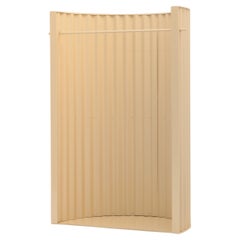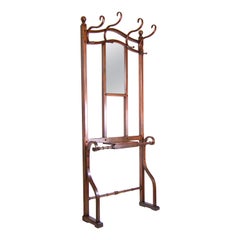
Large Clothes Stand J&J Kohn Nr.2
View Similar Items
Large Clothes Stand J&J Kohn Nr.2
About the Item
- Creator:Thonet (Designer),Jacob & Josef Kohn (Manufacturer)
- Dimensions:Height: 77.96 in (198 cm)Width: 30.71 in (78 cm)Depth: 11.03 in (28 cm)
- Style:Belle Époque (Of the Period)
- Materials and Techniques:
- Place of Origin:
- Period:
- Date of Manufacture:1900
- Condition:Repaired. Refinished.
- Seller Location:Praha, CZ
- Reference Number:Seller: Thonetky1stDibs: LU2456331704922
Thonet
For more than 180 years, Thonet — or Gebrüder Thonet — has produced elegant and durable tables and cabinets as well as chairs, stools and other seating that wholly blur the lines between art and design. Widely known as a trailblazer in the use of bentwood in furniture, the European manufacturer has reimagined the places in which we gather.
Noted for his skill in parquetry, German-Austrian company founder Michael Thonet received an invitation from Austrian Chancellor Prince Metternich to contribute Neo-Rococo interiors to the Liechtenstein City Palace in Vienna. The Boppard-born Thonet had honed his carpentry skills in his father’s workshop, where he carried out experiments with plywood and modified the Biedermeier chairs that populated the studio.
Thonet’s work for the chancellor raised his profile, and the cabinetmaker gained international recognition, including at London’s Great Exhibition of 1851, which featured works created by members of the Arts and Crafts movement as well as industrial products of the day. Thonet showed a range of furniture at the fair and won the bronze medal for his bentwood chairs. He incorporated his family’s company, the Thonet Brothers, with his sons in 1853.
Bentwood furniture dates as far back as the Middle Ages, but it is the 19th-century cabinetmaker Thonet who is most often associated with this now-classic technique. Thonet in 1856 patented a method for bending solid wood through the use of steam, and from there, the bentwood look skyrocketed to furniture fame. The works of renowned mid-century modern designers such as Alvar Aalto, Arne Jacobsen, and Charles and Ray Eames that put this technological advancement to use would not be as extensive or celebrated were it not for the efforts of the pioneering Thonet.
Considered the world’s oldest mass-produced chair, Michael Thonet’s ubiquitous Chair No. 14 demonstrated that his patented bentwood technology made it possible to efficiently produce furniture on an industrial scale. Now known as the 214, it won the German Sustainability Award Design for 2021, a recognition of the company’s commitment to environmentally responsible production.
Often called the Coffee House chair — the company’s first substantial order was for a Viennese coffeehouse — the No. 14 remains an icon. Thonet originally designed the chair in 1859, and it is considered the starting point for modern furniture.
The bentwood process opened doors — there were investments in machinery and new industrial processes, and the business began mass-producing furniture. By the end of the 1850s, there were additional Thonet workshops in Eastern Europe and hundreds of employees. Michael Thonet’s reputation attracted the attention of notable architects including Otto Wagner, Marcel Breuer and Ludwig Mies van der Rohe.
The No. 14 was followed by the No. 18, or the Bistro chair, in 1867, and the 209, or the Architect’s chair, of which Le Corbusier was a fan. (The influential Swiss-French architect and designer used Thonet furniture in his Pavillon de l’Esprit Nouveau at the 1925 International Exposition of Decorative Arts in Paris.)
Thonet’s chair designs also appeared in artwork by Toulouse-Lautrec, John Sloan and Henri Matisse in his Interior with a Violin Case. The noteworthy Thonet rocking chair remains a marvel of construction — in the middle of the 19th century, Michael produced a series of rockers in which the different curved parts were integrated into fluid, sinuous wholes. Thanks to Thonet, the humble rocker acquired something unexpected: style. It was captured in the paintings of Pablo Picasso, Pierre-Auguste Renoir and James Tissot.
Thonet is currently split into global divisions. Thonet Industries U.S.A. was acquired in 1987 by Shelby Williams and joined the CF Group in 1999, while the Thonet brand in Germany is owned by Thonet GmbH.
Find a collection of antique Thonet furniture on 1stDibs.
Jacob & Josef Kohn
While the first name that comes to mind when thinking of bentwood furniture might be Thonet (maker of the iconic Thonet No. 14 chair or “bistro chair”), Michael Thonet and his subsequent studio, the Gebrüder Thonet (Thonet Brothers), had a strong competitor in 19th-century Vienna: Jacob & Josef Kohn (also referred to as J. & J. Kohn).
Founded in 1849 by a father and son with the motto “Be one step ahead,” Jacob & Josef Kohn created modern furniture for indoors and out from Austrian beech. At the turn of the 20th century, after establishing itself with mastery of everything from chairs to coatracks and even doll furniture, J. & J. Kohn began working closely with the Wiener Werkstätte, the artisan cooperative cofounded by Austrian architect and designer Josef Hoffmann (Gustav Klimt and Koloman Moser were also members). Through this partnership, J. & J. Kohn produced an array of furniture in bentwood, cane and upholstery, which it sold through showrooms across Europe and North America. Its designs throughout the first decade of the 20th century reflect the Art Nouveau movement that was quickly gaining traction across Europe.
Price wars and mergers ensued during the First World War. Changes in the organizational structure of Thonet included a merger with Viennese company Mundus in the early 20th century, which followed Mundus’s becoming a majority stakeholder in J. & J. Kohn — these mergers yielded the formation of Mundus-Kohn and later, in 1922–23, Thonet-Mundus. The new conglomerate went on to produce examples of its bentwood furniture in keeping with the modern style of the Vienna Secession. While Thonet rebuilt, rebranded and expanded in the United States and elsewhere after World War II, J. & J. Kohn never produced furniture under that name again.
On 1stDibs, find a variety of antique J. & J. Kohn furniture including bentwood wingback chairs designed by Josef Hoffmann and other seating, side tables, beech nesting tables and more.
More From This Seller
View AllAntique Late 19th Century Austrian Art Nouveau Tables
Beech, Bentwood
Early 20th Century Austrian Belle Époque Sofas
Beech, Bentwood
Antique Late 19th Century Austrian Belle Époque Magazine Racks and Stands
Beech, Bentwood
Antique Late 19th Century Austrian Belle Époque Magazine Racks and Stands
Beech, Bentwood
Early 20th Century Austrian Coat Racks and Stands
Wood
Early 20th Century Austrian Art Nouveau Magazine Racks and Stands
Beech, Bentwood
You May Also Like
Antique 1890s Austrian Art Nouveau Magazine Racks and Stands
Bentwood
Vintage 1950s French Coat Racks and Stands
Steel
Antique Early 1900s Austrian Vienna Secession Coat Racks and Stands
Beech, Bentwood
2010s Italian Modern Wardrobes and Armoires
Aluminum, Iron
Antique Early 1900s Slovak Vienna Secession Coat Racks and Stands
Bentwood
Antique Early 1900s Austrian Vienna Secession Coat Racks and Stands
Beech, Bentwood

